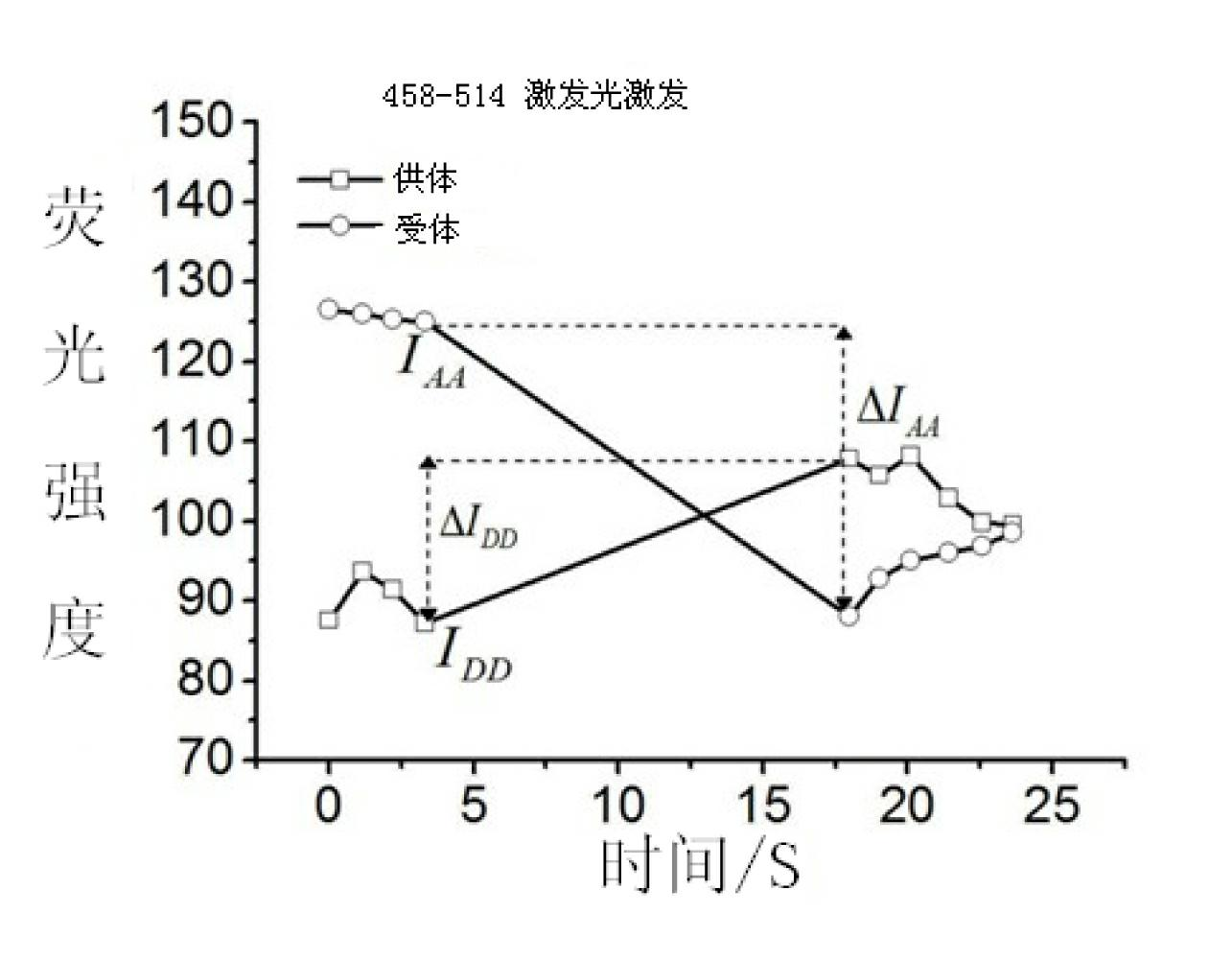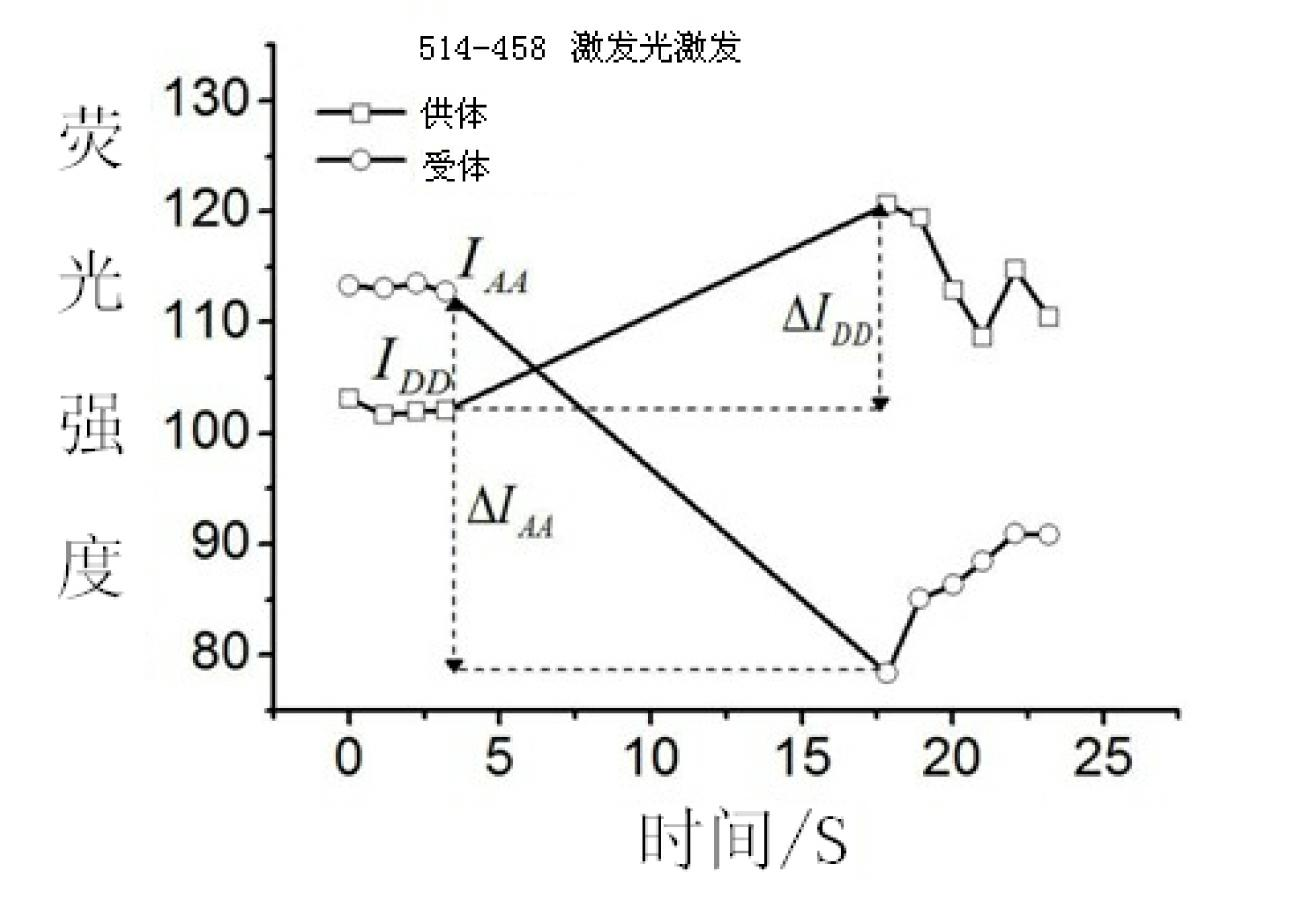FRET (Fluorescence Resonance Energy Transfer) efficiency quantitative detecting method based on partial acceptor photo-bleaching and donor-acceptor alternate excitation
A quantitative detection method and alternate excitation technology, applied in material excitation analysis, fluorescence/phosphorescence, etc., can solve the problems of long measurement time, expensive instruments, high requirements for lasers and personnel skills, etc.
- Summary
- Abstract
- Description
- Claims
- Application Information
AI Technical Summary
Problems solved by technology
Method used
Image
Examples
Embodiment Construction
[0041] refer to figure 1 , a method for quantitative detection of FRET efficiency based on partial photobleaching of the acceptor and alternate excitation of the donor and acceptor, including the processing steps of detecting the donor first and then the acceptor or the acceptor first and then the donor, wherein the first detection Donor retesting acceptor method processing steps include:
[0042] A: Use the donor excitation light to excite the donor-acceptor pair, and use the donor channel to collect the fluorescence intensity emitted by the donor, which is recorded as I DD ';
[0043] B: Select the receptor excitation light to excite only the receptor, and use the receptor channel to collect the fluorescence intensity emitted by the receptor, which is recorded as I AA ';
[0044] C: Using the receptor with the maximum intensity to excite photobleaching part of the receptor;
[0045] D: Select the donor-excited light to excite the bleached donor-acceptor pair, and use the...
PUM
 Login to View More
Login to View More Abstract
Description
Claims
Application Information
 Login to View More
Login to View More - R&D
- Intellectual Property
- Life Sciences
- Materials
- Tech Scout
- Unparalleled Data Quality
- Higher Quality Content
- 60% Fewer Hallucinations
Browse by: Latest US Patents, China's latest patents, Technical Efficacy Thesaurus, Application Domain, Technology Topic, Popular Technical Reports.
© 2025 PatSnap. All rights reserved.Legal|Privacy policy|Modern Slavery Act Transparency Statement|Sitemap|About US| Contact US: help@patsnap.com



